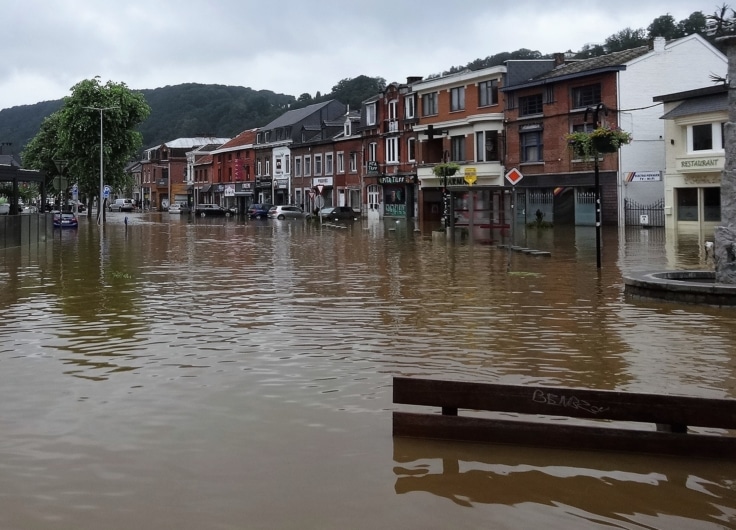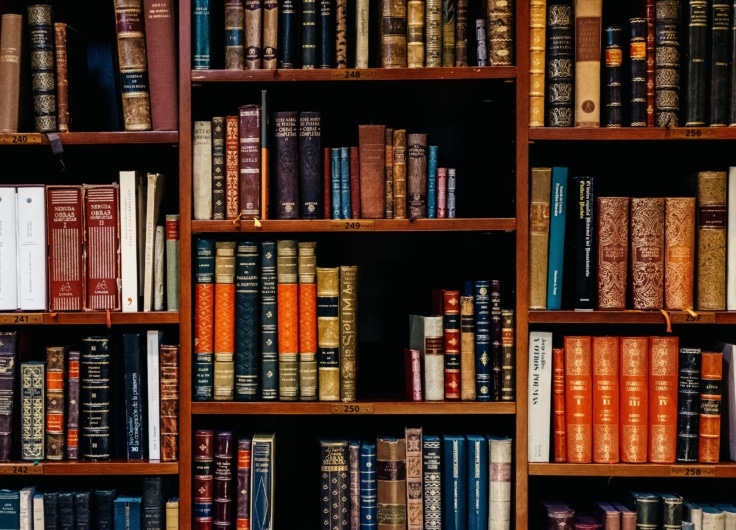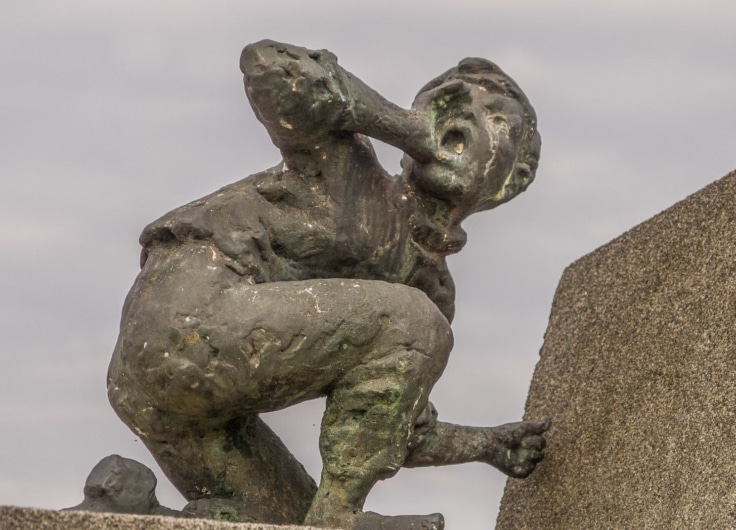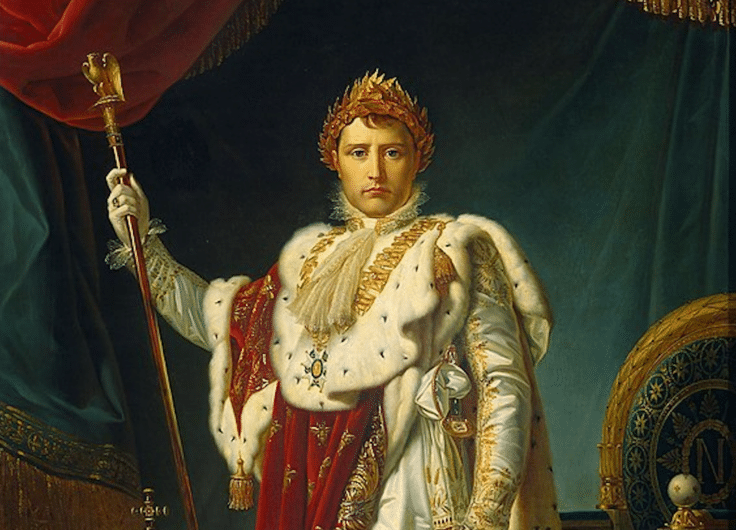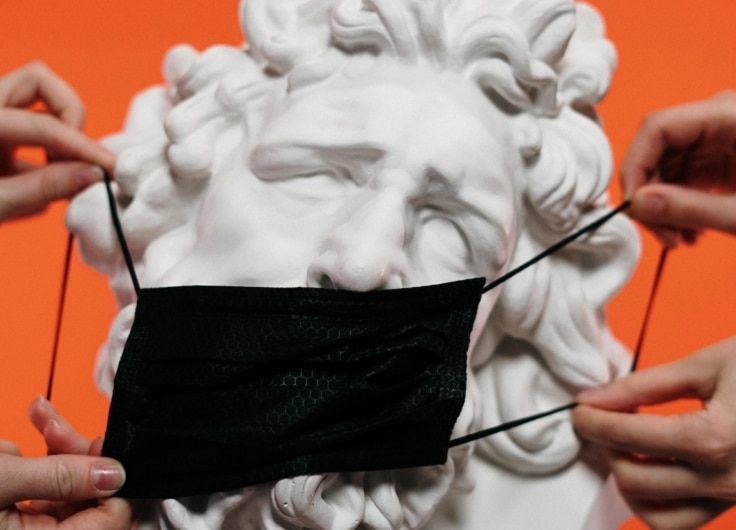Benefit Campaigns for Ukraine Fit Into a Historical Tradition
Charity has a long tradition in the Netherlands and as a researcher one is quickly amazed by the enormous sums of money that were raised in the past, writes historian Lotte Jensen. The actions for Ukraine show many parallels to past events.
On 7 March, two and a half weeks after the war between Russia and Ukraine broke out, the cooperating aid organizations in the Netherlands organized a national day of action. In Hilversum, famous and less famous Dutch people gathered behind the phones to collect donations. In the evening, there was a national campaign on television. At the end of the day, the amount of money collected read 106 million euros, and that figure is still increasing. ‘I think this is historic,’ said Tineke Ceelen, director of the Refugee Foundation. It was indeed an impressive amount and it showed how much Dutch citizens sympathized with the fate of the Ukrainian citizens. However, this action was not historic, in terms of being unique or unprecedented.
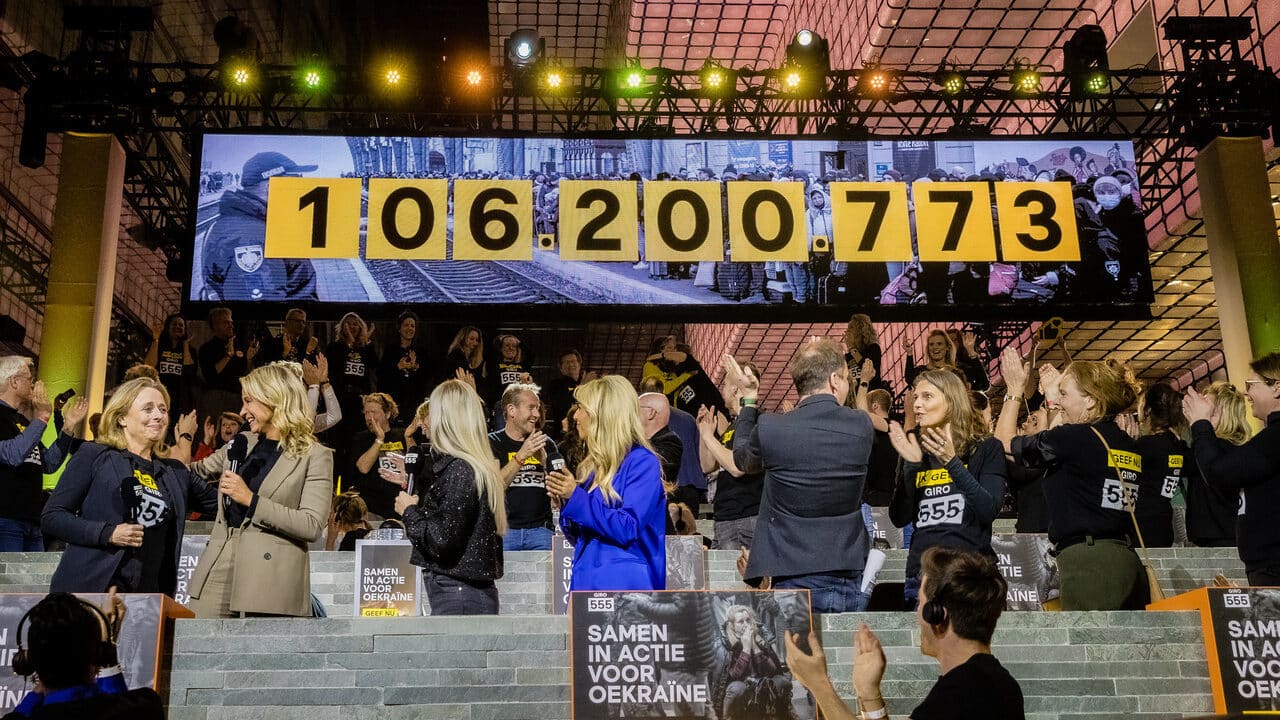 The Dutch fundraising campaign for the victims of the war in Ukraine has raised 106 million euros.
The Dutch fundraising campaign for the victims of the war in Ukraine has raised 106 million euros.© Ben Houdijk / NPO
The benefit campaign and associated generosity fit into a much older pattern. Charity has a long tradition in the Netherlands, and as a researcher one is quickly amazed by the enormous sums of money that were raised in the past. For example, a group of wealthy citizens from Rotterdam and Amsterdam came to the aid of the victims of the 1740-1741 floods in the river area. They collected an impressive amount of 55,000 guilders (now: 576,000 euros). At the end of the eighteenth century, the national culture of giving was off to a great start and Dutch citizens donated even larger sums in the event of disasters. The flood of 1825, for example, yielded around 2.2 million guilders (25 million euros). An absolute hit was the flood of 1953, when no less than 138 million guilders were collected. That corresponds to about 534 million euros today, which is five times as much (!) as the amount raised for Ukraine.
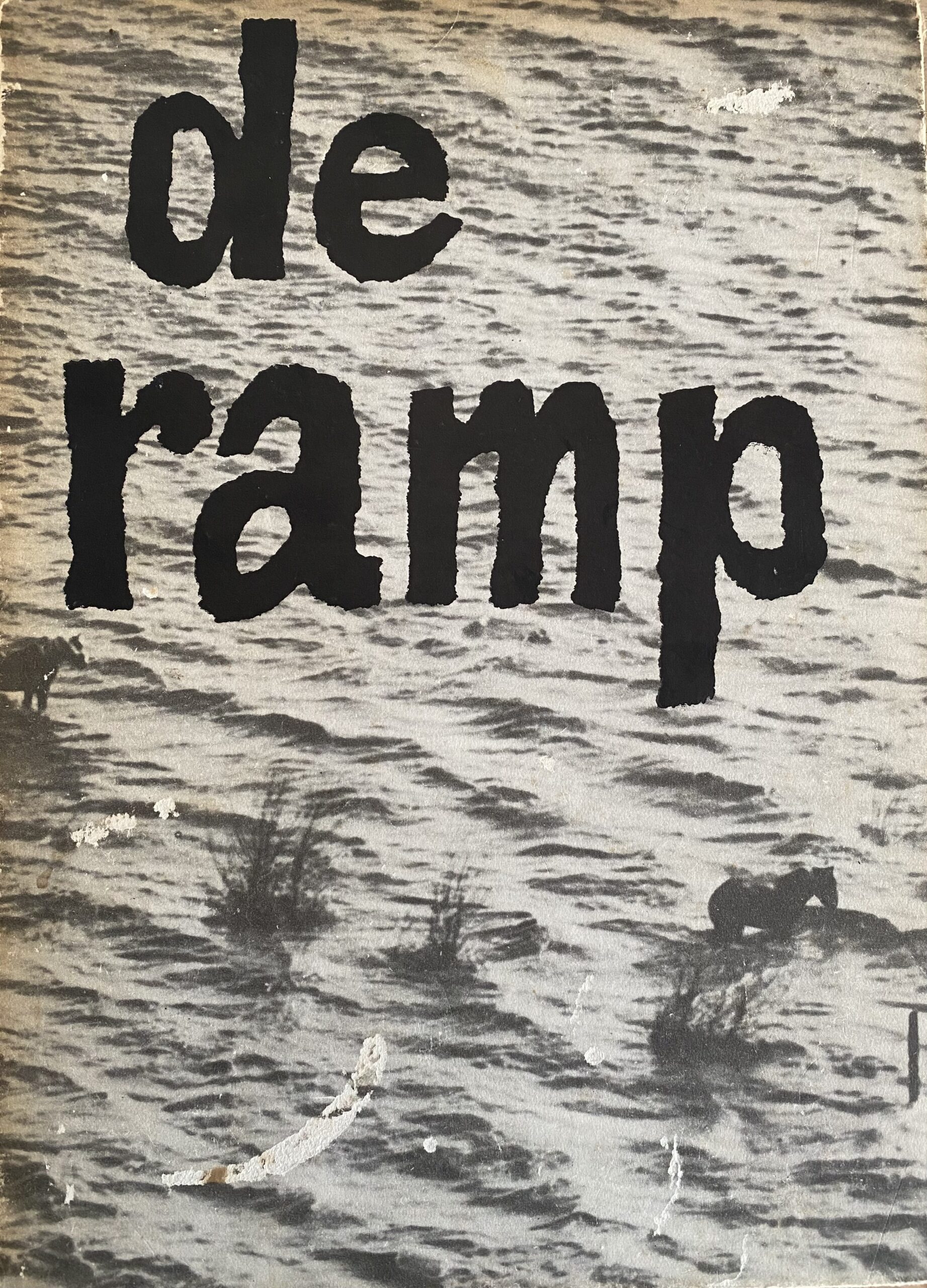
These enormous amounts of money were generated thanks to countless citizens’ initiatives, publications and benefit concerts. The photo book De ramp sold no less than 675,000 copies. The proceeds went to the victims of the flood. The national fundraising campaign Beurzen open, dijken dicht is also anchored in the collective memory. Private individuals and companies donated overwhelmingly large sums. In addition, the joint broadcasters aired a radio program every Saturday evening, in which well-known artists and choirs made an appearance. On the last evening, the presenters announced the final amount of money collected, which exceeded all expectations.
Similar to the action for Ukraine, many aid actions also had an international dimension: in 1953 donations came from all over the world for the victims of the flood disaster, from America to Denmark, from the Cape of Good Hope to Italy. Vice versa, the Dutch also jumped into action for victims of disasters abroad. When the dikes of the Po River in Italy burst in 1951, a Committee for the Relief of Floods was quickly established. The generosity of the Dutch was stimulated through benefit performances, public auctions and appeals in the newspapers.
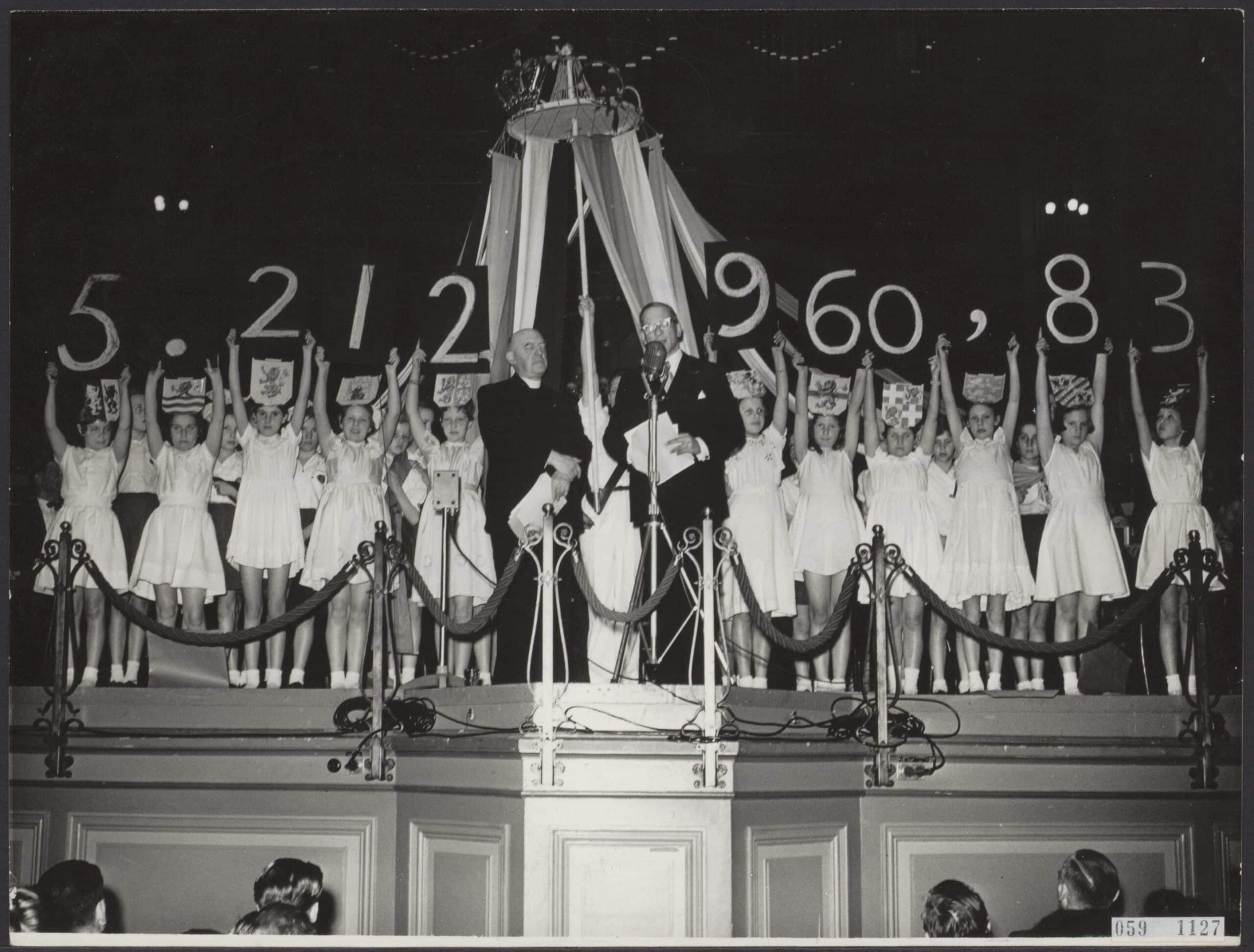 The national fundraising campaign 'Beurzen open, dijken dicht' in 1953
The national fundraising campaign 'Beurzen open, dijken dicht' in 1953© Joop van Bilsen / publiek domein
From my own youth, I remember the worldwide action against hunger in Africa, Live Aid. It was an incomparable media spectacle at the time, with live concerts around the world with nearly 2 billion viewers. The proceeds are estimated to be around 180 million euros. The international solidarity made a big impression on my generation. Music proved to be a unifying factor: ‘Do They Know It’s Christmas’ and ‘We Are the World’ topped the music charts for weeks.
Another parallel between past and present can be seen in the way European royal families show their commitment through donations and other actions. The Danish royal family donated one million Danish kroner (over 134,000 euros) to Ukrainian refugees. Britain’s Queen Elizabeth also made a large donation. During past disasters, monarchs and queens also always gave imposing sums of money. As an example, Tsar Alexander I donated no less than NLG 100,000 (now: 1.1 million euros) to those in need in the Netherlands, exactly as much as King Willem I.
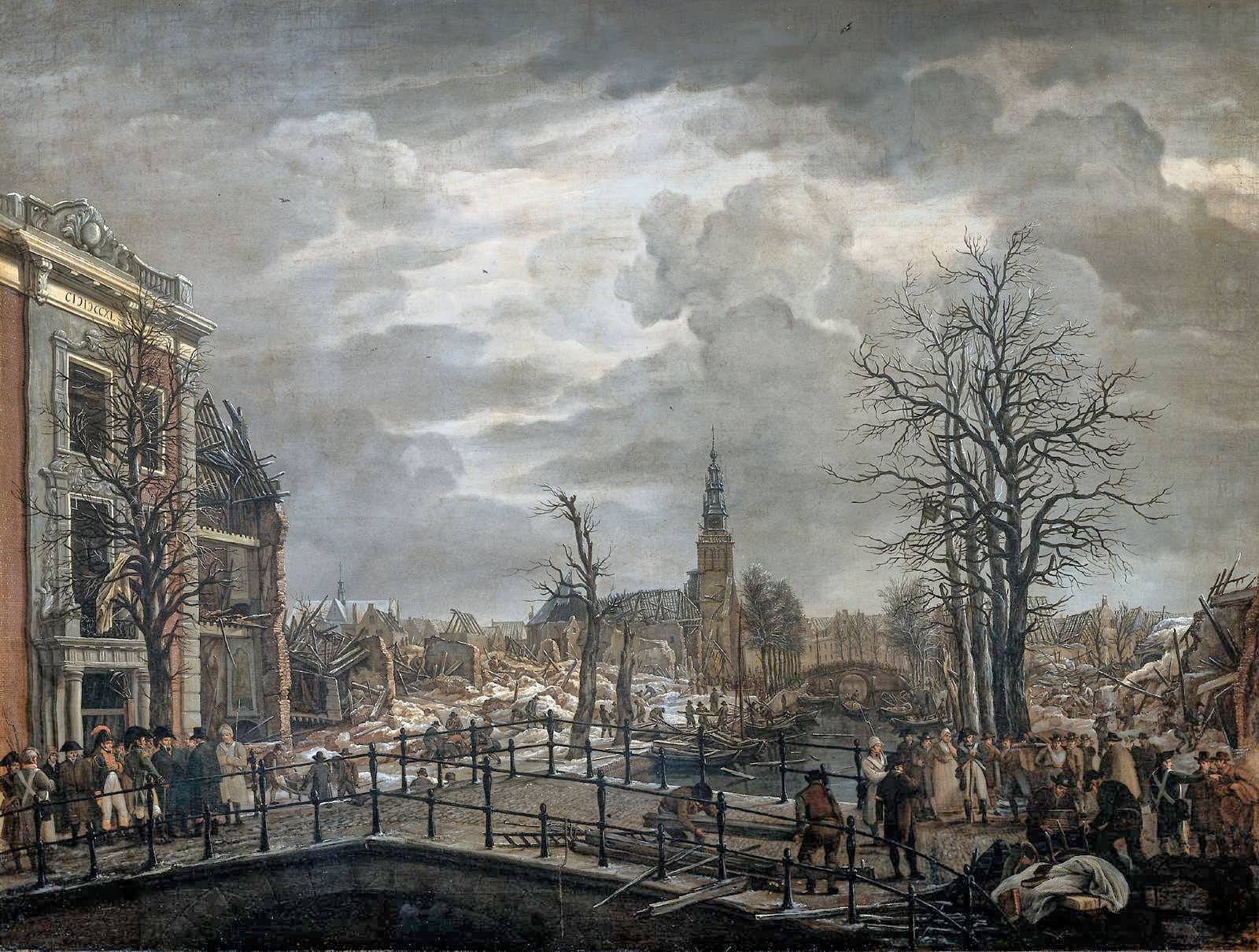 King Louis Napoleon visits Leiden after the gunpowder disaster of 1807.
King Louis Napoleon visits Leiden after the gunpowder disaster of 1807.© Rijksmuseum, Amsterdam
Just as King Louis Napoleon took in the victims of the Leiden gunpowder disaster at Huis ten Bosch in 1807, the Belgian royal couple Philip and Mathilde are making homes available to receive refugees from Ukraine. The Dutch royal couple, Willem-Alexander and Maxima, followed their example and are opening up Het Oude Loo castle as a shelter. Beautiful gestures, which fit into a two-century-old tradition.
So from a historical perspective, the action for Ukraine was not unique, but it fits seamlessly with historical trends. Of course, the Dutch action for Ukraine was “historic” in the sense of being “memorable”. And it was heartwarming too, because it expressed international solidarity.


